






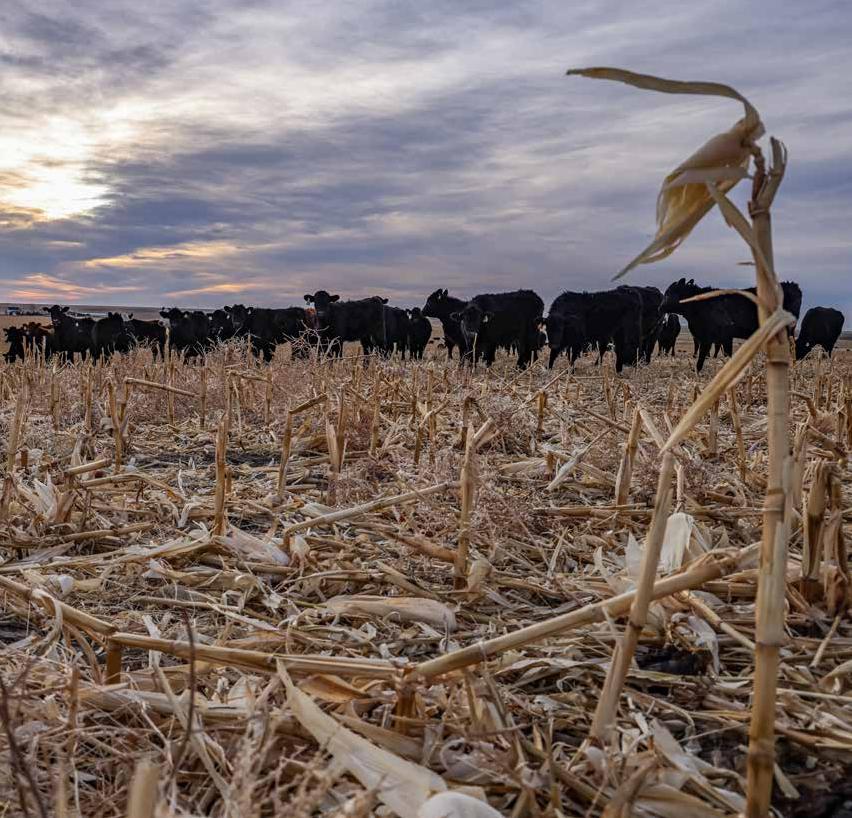
GET THE MOST FROM MARGINAL FEED.

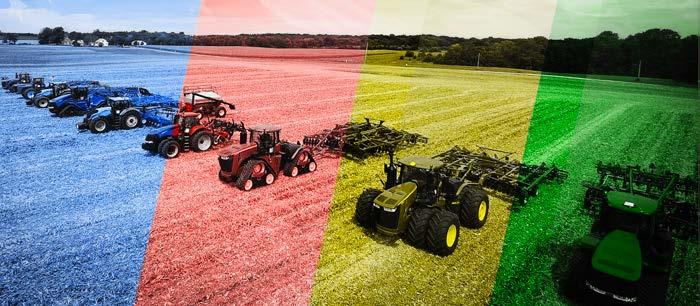



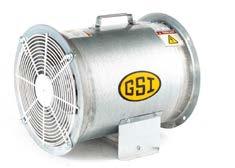
8,000+









a Ritz Family Publication
President/CEO
Michael Ritz – mikeritz@ritzfamilypublishing.com
General Manager
Brenda Stoner – brenda@ritzfamilypublishing.com
Office Assistant
Kyle Heisey – kyle@ritzfamilypublishing.com
Sales
Kevin Davis – kevin@farmranchdairy.com
Pat Drury – pat@ritzfamilypublishing.com

Corporate Office
Ritz Family Publishing, Inc.
714 N Main Street Meridian, ID 83642
www.ritzfamilypublishing.com
Sales
For all sales inquiries, call toll free 1-800-330-3482 or 1-208-955-0124
info@ritzfamilypublishing.com
Subscriptions
For a subscription or to change your mailing address, call toll free: 1-800-330-3482 or 1-208-955-0124
info@ritzfamilypublishing.com
Design & Layout By iRockimages.com, Boise, ID
Printed By ESP Print + Mail, Boise, ID
Copyright© 2023. All rights reserved.
Every effort has been made to ensure accuracy of this publication, however, the publisher does not assume responsibility for omissions or typographical errors. The publisher does not assume responsibility or is liable for the contents of any advertising herein. Publisher’s liability for errors in an advertisement is limited to a correct insertion in the next publication. In the event of a misprint, the publisher must be informed of such error prior to printing of the next publication.
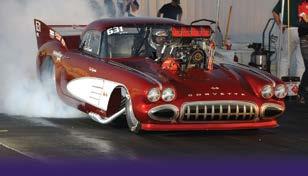


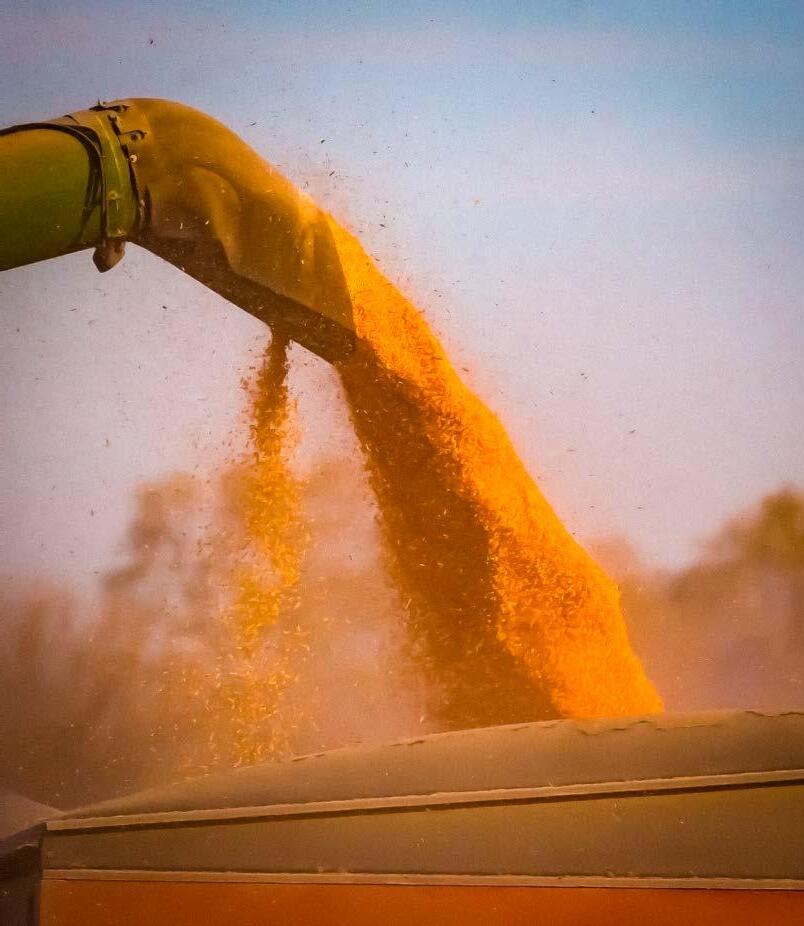
The dry summer and fall of last year and the bitter cold this winter have combined to make hay a valuable commodity. This has made many consider putting cropland to a temporary hay crop, such as sorghum-sudangrass or teff. At the same time, the explosion in China soybean purchases has made raising soybeans a very attractive proposition as well. It is nice for a change to be faced with actual profitable choices! But when faced with two attractive choices, why not choose both?
One thing the cover crop movement has taught us is that growing crops in rapid sequence does not exhaust soil, rather it feeds the soil microbes that increase soil productivity. It is entirely possible to plant a crop of oats, peas or spring triticale (or a mix of all three) in March and have a hay crop made by May, in plenty of time to plant soybeans. Not only can the hay crop make as much revenue as we typically expect from a bean crop alone but growing the hay can create a nice stubble to control soil erosion and improve water infiltration and rooting depth and may offer weed control benefits as well. Spring triticale is an unfamiliar crop to a lot of people, but it is a real rising star in the forage and cover crop world. A cross between rye and spring wheat, it has hybrid vigor compared to either parent. Compared to spring oats, it can yield much higher, and is more competitive against weeds. The quality drops after heading relative to oats, but most people prefer to bale in boot stage to leave as much growing season for the following crop as they can. Peas add both additional yield and additional protein to the mix. Or maybe you would prefer to focus on hay and forgo the beans altogether. In that case, why not grow two hay crops rather than one? You can raise the oat/pea/spring triticale, then follow with a summer forage crop as well. For maximum tonnage you could try a crop of dry stalk sorghum-sudangrass, which offers the high yield of sorghum-sudan in a faster drying package. Alternately, teff grass offers a very rapid drying hay option, while cowpeas or mung beans offer high protein options, Can’t make up your mind? Plan all of them in combination to hedge your bets. If your pastures are beat up after last
summer’s drought, you could pasture this crop in late summer and give your perennial pastures a much-needed chance to restore vigor and grow deeper roots to weather the next drought. And, if spending all summer baling hay and spending all winter feeding hay sounds less than appealing to you, how about planting a crop that can be stockpiled and grazed without all that work, such as a crop of brown midrib sterile sorghum, with some companion crops for added protein and energy? Many people are using this very economical means of wintering livestock now with great success. In the fall, you can add yet another forage crop, drilled right into the living stubble of the summer mix as soon as it is hayed or grazed off in late summer. At first glance, this seems to doom the new seedlings to certain failure, as they are competing with the regrowth of the established summer crop for moisture and light. But it doesn’t work that way. The transpiration of moisture from the
regrowth of the summer crop cools the soil, dropping the temperature as much as 30 degrees relative to the air temperature. The cool-season seedlings need only 10% of the moisture at 80 degrees as they do at 100 degrees, so drilling a cool-season pasture mix of oats, triticale, rye, ryegrass, turnips, radishes and peas right into unkilled stubble of a summer annual mix can actually increase the survival of the seedlings. After a hard freeze has killed and thoroughly dried the summer plants, they can be grazed off right along with the green growth of the cool-season mix, saving on winter hay needs and providing much higher quality nutrition than hay. Besides, you also save the cost of termination! Best of all, the growing of crops in rapid succession provides those vital soil microbes a continual flow of nutritious root exudates for improving soil structure and water-holding capacity for better crops in the future.


now a
Since the onset of 2020, fertilizer prices have been exploding. But now, simply the availability in addition to evermore outrageous cost of fertilizer due to a variety of well-publicized reasons has become very seriously problematic. Presently, there seems to be no ceiling to cost escalation or foreseeable end to limitations on supplies. This means that every pound or gallon of fertilizer applied must be utilized by the crop to the greatest extent possible.
About “Precision Farming”: This term has implied mechanical means of precise seed and fertilizer placement, variable-rate fertilizer applications based on grid soil sampling and nearinfrared ærial surveys, metered applications of fertilizers through irrigation systems and GPS guidance of tractors and sprayers. But realistically, these approaches address only a modest part of achieving maximum crop performance with the most efficient use of money and resources. Whether or not precision mechanical means are used, here some of the most important considerations when attempting to get the most out of the least:
• “Traditional” practices have got to go! Here are the biggest mistakes I’ve seen farmers make over and over again during my 30-plus years with TPS Lab:
• The major application of fertilizer being made at the start of the growing season, expecting it to suffice for the entire season.
• The wrong fertilizer for the soil type or crop.
• Not keeping up with the latest advances and discoveries in crop nutrition.
• Not using bio-stimulants to improve crop performance and its resistance to disease and insects.
• Ignoring existing soil nutrients which are plantunavailable, especially in calcareous, high-pH soils.
• Ignoring irrigation and spray water quality.
• Ignoring soil health/life.
• Not planning beyond this year’s crop using the “Regenerative Agriculture” approach.
• The key issues in efficient crop production are:
• Timing and placement of fertilizer applications.
• The correct fertilizer for your soil type, the crop and its stage of development.
• Acceptable irrigation and spray water quality.
• The use of biological inoculants and bio-stimulants, such as amino acids, growth hormones and other beneficial products that may not be essential for plant growth. Timing and Placement of Fertilizer Applications Is Crucial
– Many farmers apply the bulk of their fertilizers at the onset of the season. This is colossally wasteful, as plants develop their appetites and tastes with growth, much of the fertilizer has been dissipated by the time the plants start needing it the most. This is particularly true with N. Remember that crop nutritional needs change throughout the growing season, so applying the wrong fertilizer at the wrong time for your particular crop wastes much of your money. As to placement, with row crops, side-dressing can require much less fertilizer and starter “pop-up” fertilizer is astonishingly effective in getting crops off to fast vigorous starts. After emergence, the use of foliar sprays is the most efficient method of getting nutrients into plants.
About Foliar Sprays – In some areas of the country, particularly the Corn Belt, foliar sprays of plant-beneficial and nutritional agents are typically seldom used, as this area of the country has been historically known as having the highest-producing capacity of corn and soybeans per acre. Unfortunately, the Midwest’s rich soil nutrient pool is declining due to reduction of soil organic matter (soil carbon) much like the rest of the country. This leads to nutrient deficiencies,
especially micronutrients, that limit plant genetic potential resulting in reduced yields and quality. As a result, increased disease and insect pressure increases input costs of additional fungicides and pesticides which reduces return on investment. Here, foliar sprays of bio-stimulants, micronutrients and trace elements can have big, faster and longer-term impacts on crop health, performance and economics.
Type of Fertilizer – Here is where a Soil Test is really important! If you have calcareous soils and buy micronutrients in the oxide form, you have literally thrown money on the ground with no benefit at all. When it comes to nitrogen, there can be a huge difference between anhydrous ammonia, urea, ammonium nitrate and ammonium sulfate as to its longevity, its utilization by the plant and its impact on native soil chemistry and soil life. Is it nitrate nitrogen, ammonia nitrogen or organic nitrogen? The forms of other nutrients are equally important – for example, MAP or DAP? Choosing the best fertilizer for your specific soil conditions or foliar fertilizer for specific stage of growth can save huge amount of money and increase ROI. This is the reason why some have not seen much success from the use of foliar sprays. The wrong product, mixing incompatible or antagonistic products together, wrong application rates, missing critical stages of growth and inadequate water quality are quite common mistakes.
Plant Sap Tests at critical stages of crop development during the season are crucial to determining the nutritional needs of the crop so that no more than necessary of what is applied, thus saving money and limited supplies. Plants eat and drink every day and their tastes and appetites change with time. Those changing needs (but no more than needs) must be accommodated to have some assurance of a profitable outcome.
Advances and Discoveries in crop nutrition and health are being made all the time – particularly in the chelated forms of micronutrients, resulting in a much higher efficiency of plant uptake and utilization. This means using less to produce more. A fairly recent discovery is foliarly-applied water-soluble silicon. Si stiffens and hardens cell walls, thereby discouraging piercing and gnawing insects and resist disease – and lodging. Si forms a very thin hard layer that resists nematodes and soil pathogens on roots. A very recent tool is nanoparticles that encapsulates the inputs you already use into tiny nanoparticles that glide through foliar and root barriers, thereby improving efficiency and speed of uptake and reducing the energy required by the plant to get nutrients into its cells.
Bio-Stimulants – There is more to crop health and nutrition than just chemistry. These game-changers include organic acids, growth hormones and biological inoculants that can dramatically improve crop performance, nutrient uptake efficiency and resistance to disease and insects - thus reducing or eliminating entirely the need for costly pesticides and fungicides. Encourage the plants, microbes and other soil life to do much of the heavy lifting!
Already Existing Soil Nutrients – Particularly in calcareous
soils, many of the metal nutrients exist as carbonate and bicarbonate chemical compounds often in abundance – all very insoluble and therefore unavailable to plants. The standard soil treatment is sulfur but the latest method also includes the use of bio-stimulants. These break the chemical bond by chelating the nutrients into bioavailable forms. Humic/Fulvic Acids, Amino Acids, Enzymes and beneficial soil bacteria from additions of soil inoculants all play a vital role to access this nutrient pool. Additions of these bio-stimulants to your existing fertility program can increase your fertilizer efficiency by more than 20% in most cases, allowing you to cut back on fertilizer in times of high cost and limited availability, and have long-term cumulative benefits.
Water Quality Test – Irrigating with hard or salty water can have dramatic impacts on soil chemistry and structure, because What’s In Your Water Becomes Part Of Your Soil ®. As aquifer levels fall, natural dissolved minerals become more concentrated. There are several methods to remediate soil. Using hard water for the spray mix can change the chemistries of spray agents to the extent of making them ineffective and possibly damaging plants. Appropriate water treatment is needed to offset or remediate these problems.
Regenerative Agriculture – Planning beyond this year to reduce costs and increase crop performance by regenerating soil structure and health/life, thereby increasing long-term nutrient availability and carbon sequestration, reducing future costs and resources. Reduction of soil disturbance and continuous vegetation cover on soil as much as possible increases the amount of diversity of organic residues to maximize nutrient and water use efficiency by plants. Restoring overall microbial life is essential to soil/plant health and biodiversity. This sustainable approach is a long road to travel but it must be initiated if farmers want to be successful over prolonged challenging times.
Bottom Line – Maintaining balanced nutrition and vigorous soil life at every stage of your plants’ life cycle will ensure that no matter what challenge Mother Nature sends, your crops will have the best chance of making you money. Soil, Water and Sap Testing is one of the best investments a grower can make, especially during these times of uncertainty with exorbitant fertilizer prices so you can apply only what your crop needs, where it needs it and when it needs it!
Don’t guess and hope for the best!

For less than $4/acre you can get broad spectrum protection - even against devastating diseases like white mold and SDS - as well as improved emergence during drought.
Averaging 2+ bu/ac, Heads Up® is an easy way to get peace of mind going into planting. Whether it’s a wet or dry year, you’re going to see benefit.
What is Heads Up®?
Family owned and operated since 1999, Heads Up® is a biological seed treatment registered for conventional and organic use, offering protection against both white mold and SDS, as well as other fungal and bacterial
diseases. Visit HeadsUpST.com for full list of EPA registered crops.
Key Benefits Include:
• Low use rate and compatible with other treatments
• 15+ years of trials and third-party research
• Improved emergence in drought
• Full-season, broad spectrum protection
• EPA registered. OMRI™ listed for organic use.


• Increased yield and lower overall incidence of disease
• Fewer infected plants, which reduces the spread of disease and lessens the amount of sclerotia returning to the soil – positively impacting future planting.
• Can apply well in advance of planting.
• Cost-effective, it only takes about a quarter bushel increase to break even.
While there is no silver bullet approach for eliminating white mold or SDS, they can be effectively managed through a multiple step process to limit yield loss. Practices for reducing severity include rotating to non-host crops, using resistant varieties of seed, and having your seed dealer apply Heads Up® Seed Treatment.
Ask your seed dealer or call 1-866-368-9306 for more information.




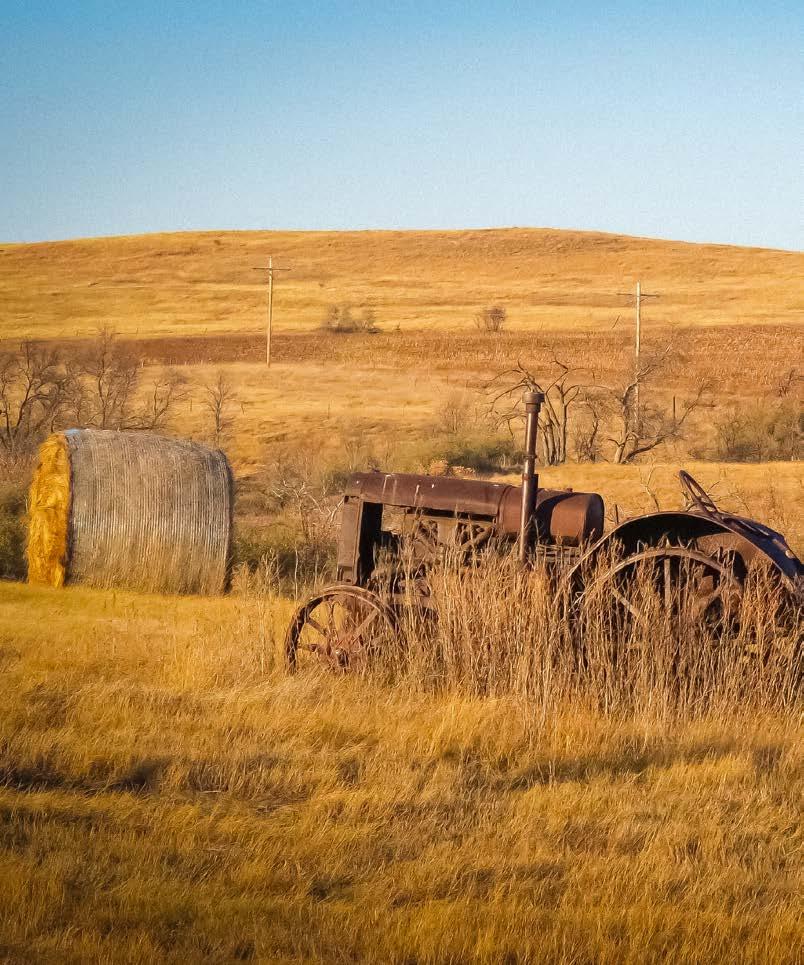


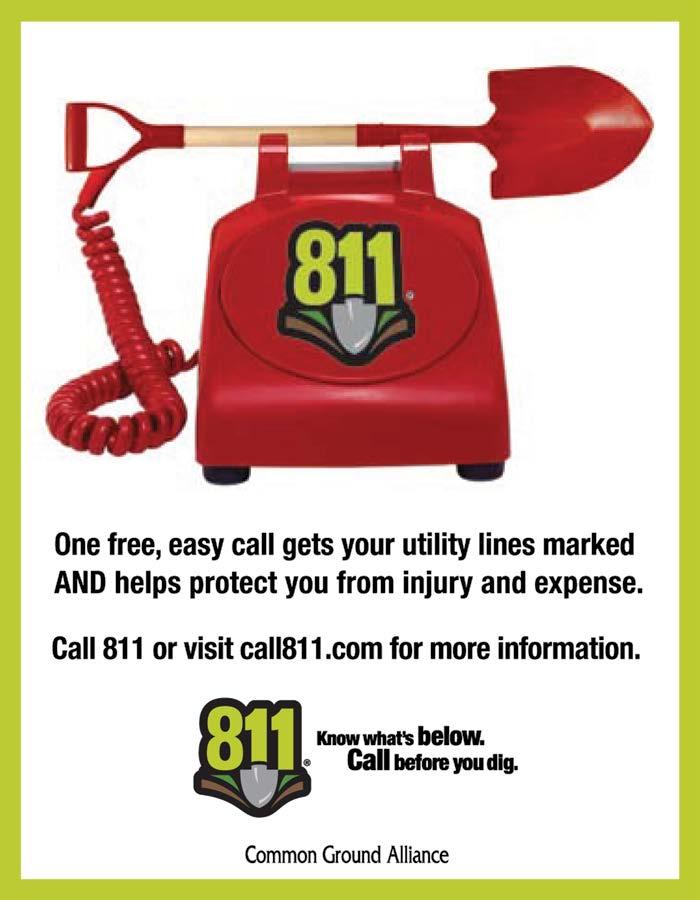
One Call of Wyoming is a nonprofit organization that administers the 811 notification center within the state of Wyoming. Any entity within the state that owns/operates any underground facilities shall, by statute, register their location and contact information with the notification center, there are few exceptions to this requirement. If a person is involved in any activity in which earth, rock or other materials on or below the ground is moved or otherwise displaced by means of hand or power tools, power equipment, explosives or other means, and includes grading, trenching, digging, ditching, auguring, tunneling, boring, plowing in, pulling in, ripping, scraping and pipe installing, EXCEPT TILLING OF SOIL AND GARDENING OR AGRICULTURAL PURPOSES. They must call the notification center by dialing 811 in Wyoming or from out of state dial 1-800-849-2476 at least 2 full business days, and not more than 14 full business days, prior to beginning their excavation.
Once the notification center (811) has been contacted, the center will send out notifications to our member, operators/ owners, to let them know of your intended excavation activity near their underground facilities within the next 2 to 14 business days. The members must respond to the excavator within the 2 full business days and either clear the described dig area or mark their facilities within the described dig area in some fashion within 2 feet of the actual facility location.
PLEASE, for your safety and for the safety of the general public, and the protection of our vital underground infrastructure. Submit your request online at www.onecallofwyoming.com or dial 811 from within Wyoming, or if calling from out of state please dial 1-800-849-2476 at least 2 full business days prior to beginning, ANY excavation activity.
Submitted by One-Call of Wyoming’s Administration Office Locate Number 1-800-849-2476

Depending on where you live and how much stock you put in The Old Farmer’s Almanac, the coming winter could be a snow-filled one. While heavy snowfall brings much needed moisture, moving it and making areas passable creates its own set of challenges. For light snows and smaller areas, bucket loaders and skid steers can get the job done, but when you live in an area where deep snow and high winds are the norm, it may be time to consider a tractor-mounted snowblower.
Clay Zimmerman of Evanston, Wyoming bought a HitchDoc HDS8205 two winters ago. He and his wife own High Uinta Pack Goats, the only pack goat rental service in the country.
“Where I live, it’s all rolling hills and normal snowfall starts at 6 feet deep. The gravel road is only maintained by my neighbor and myself.” For years, Clay’s neighbor
cleared the snow with a bucket mounted to his tractor and it took him all day. That just wasn’t efficient enough, so, Clay started looking into options for a snowblower to mount to his tractor.
“I looked at a dozen brands and even bought one before I bought the HitchDoc, but it wasn’t heavy duty enough.” After more research, Clay opted for the HDS8205 from HitchDoc. He mounted it to the front 3 point hitch of his 140 horsepower tractor so he wouldn’t have to look backwards the whole time and connected it to the hydraulics so he could control it with the joystick.
Now Clay clears the snow for him and his neighbor in about an hour. Clay says his snowblower has enough power to throw snow 100 feet. Reflecting on his purchase, Clay said, “it’s been a life saver. It’s the best purchase I could’ve made.”
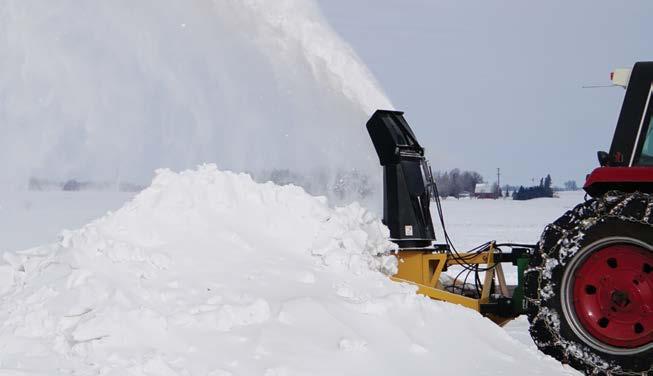
John McDonald knows a thing or two about livestock equipment after working with cattle and rodeo livestock most of his life. Knowing there had to be a better portable corral design out there; he came up with it himself.
In 2003 the public was introduced to his original Rawhide Portable Corral. It could be set up by one person without any lifting and it could be done quickly; yet it could also be pulled down the road at highway speeds, ensuring that no time would be wasted while catching cattle.
Fast forward to 2018 and now customers have two different corrals to choose from; the Rawhide Original, throwback to the first design, or the Rawhide Processor.
Even though the Processor’s design is viewed as the superior portable corral on the market, John believes that there are still those who will want a smaller, more affordable system. Enter the Rawhide Original, which is a blend between the two designs he has offered throughout the years and has a bumper hitch with

permanent transport wheels. The Original is only offered in the Standard and Large sizes.
The Processor is offered in three sizes for the convenience of ranchers and cattle producers throughout the world and the main difference with this design is the ability to custom-ize the corral upon ordering by including a hydraulic alley, head gate or loading chute. Whether you simply want to catch your cattle or process them on site and load them into a trailer from the pasture, you are able to do so with the Processor.
The design of the Processor continues to impress cattle producers with its versatility and ease of use. The permanent sheeted adjustable alley aids with working your livestock, whether it is done on site or in the field. The adjustable alley can be sized from thirty (30) inches down to sixteen (16) inches; either manually or hydraulically.
The most notable features of the Rawhide corrals are that they are easy to set up and they are easy to transport. We mean it when we say that one person can open up the corral without lifting a panel. This will continue to be the model as we move forward with our newer designs.
The key is one person can handle it all by themselves. Cus-tomers can manipulate the panels so it is not just one big pen, but two, three or even four pens for sorting, as one can never have enough pens when it comes to working cattle.
John’s design was the first portable corral on the market to offer the hydraulic lift option. This has been so popular that we now offer customers the option to buy the Hydraulic Lift Kit with or without the battery so that they may upgrade existing equipment of their own. A lift kit includes the jack, power unit, solar panel and of course the option of including a battery at time of purchase.
John and his wife Mary run the family business at their manufacturing plant in Abilene, Kansas, which is the only place where a Rawhide may be purchased outside of South Texas, where we now have a dealer in Hempstead.
Please check out our website for more information and to view our videos: www.rawhideportablecorral. com or find us on Facebook. Phone # 785-263-3436
ETIP, Inc. says to help prevent diesel/biodiesel fuel gelling in cold weather the Universal Fuel Filter Preheater mounts easily to the engine fuel filter. It is one of their selection of products for cold weather operations and for Security, Safety and Maintenance.
Cold conditions often affect diesel fuel flow during start-up and in daily operations. When it is cold enough to cause gelling in the fuel over-the-road trucks, heavy machinery, automobiles, generators and other equipment that must operate in low temperatures can become disabled. The gelling starts in the bulk storage tank and flows into the equipment tank during refueling operations. From there the engine pumps it to the and plugs it preventing passage of the fuel. Another complication is if the bulk tank filter plugs up. The only solution is to replace the filter or warm up the fuel until it flows again. It sometimes requires towing the equipment to an inside location or bringing a heater to the equipment site.
Fuel filters for bulk tank dispensing pumps can also be affected. See our new Filter Heater for Bulk Fuel Tanks and Dispensing Pumps. The costs related to fuel gelling can become expensive in downtime and in repair cost. Sometimes as reported to us it is difficult to even get the fuel to flow from the bulk tank to that filter. Our suggestion is to install one of our oil pan heaters on the bottom of the bulk tank as close to the outlet pipe as possible. It should be energized for six to eight hours to insure the maximum temperature that it will achieve has been reached when fueling starts. This preheater helps to insure that the first fuel out of the tank going to the bulk tank filter should flow.
The Universal Filter Preheater™ offers a simple solution. It is a thin, flexible, silicone/fiberglass heating pad that easily wraps around the metal filter housing to maintain full contact and to evenly transmit heat quickly through the metal of the filter housing helping to avoid the risk of fuel gelling. It converts the metal filter housing into the heating element. It is an electric blanket for the fuel filter housing. Springs and nylon ties hold it in place.
When it is time to change the filter element, the Universal Filter Preheater™ is easily released for transfer to the new filter housing. Fuel gelling and related problems are avoided.
Drawing 85 watts it is available in several voltages: direct current 12v & 24v, and alternating current 120v & 240v and a dual grid model combining the option of powering with direct current or alternating current in the same Universal Filter Preheater™. Measuring 4” X 7” it is designed to fit a diameter of 2.5” to 4” (circumference of 8” to 12”). See it on the website at http://www. etipinc.com under Maintenance. The Universal Filter Preheater™ carries a three year materials and workmanship warranty. A standard 12v Universal Filter Preheater ™ is priced at $138 each.
The standard engine oil and hydraulic Preheaters (Peel & Stick Fiberglass/ Silicone) also are being used to warm fuel tanks. 120v or 240v they stick to the outside of the tank and warm the fuel overnight. No cutting or welding, just thoroughly clean off the mounting area & stick it on according to instructions. Insure a good ground electrically. Mount a Preheater as close as possible to the outlet pipe to insure a good flow to the Bulk Tank filter.
The cold weather products in the line of Universal Preheaters. help improve starting and operations and bottom line business performance. “THE BEST WAY TO PREHEAT ALMOST ANYTHING.”
Include both the Peel & Stick Universal Preheater™ line for engines, hydraulic systems, transmissions, gear boxes, etc. and the Universal Filter Preheater™ in cold weather packages for a more effective and complete solution to cold weather problems.
PO Box 83, North Aurora, IL 60542-0083 USA (630) 966-8992 FAX (630) 801-9569 www.etipinc.com | sales@etipinc.com (Veteran Owned Small Business)

‘Operated Southeastern 2004’ by selection of ‘Pre-engineered’
‘Multidifferent building Structures,’ ‘Durability’ tremendously when buildings, all Agriculkinds of every one ‘Friendly’ Customers

Manufacturers of :
Grain & Gravel Truck Boxes, End Dump Grain & Gravel Trailers, Also Bottom Dump Gravel Trailers.
Truck Sales
Load Line Manufacturing, Inc.
2 1/2 mi S. of Winkler
Box 1900, Winkler, MB R6W 4B7 (204) 325-4798 Fax: (204) 325-4055
jbd@mts.net

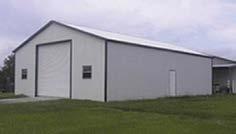
Riders’ Metal, LLP is a ‘Family Owned’ and ‘Operated business’ that is located in beautiful Southeastern Colorado. It was originally ‘Established in 2004’ by Crockett and Wendi Rider in order to offer a large selection of ALL types of ‘General Purpose Metal’ and ‘Pre-engineered’ Red Iron Buildings.
What most people don’t realize is that Metal is an ‘Multi-Purpose Material’ that can be used for many different building solutions. When used for ‘Residential Building Structures,’ Metal can add ‘Vibrant Color’ to any home and ‘Durability’ against all types of weather are increased tremendously when used properly. In addition to ‘Commercial’ and ‘Residential’ buildings, all types of structures including: Garages, Tool Sheds, Agricul-tural Storage Buildings, Retail Businesses, and other kinds of protective environments can also be created.
1. At Riders’ Metal, LLP – Our Mission for each and every one of ‘Our Valued Customers’ is:
2. To Provide Outstanding Customer Service by a ‘Friendly’ & ‘Knowledgeable’ staff of employees;
3. To Manufacture ‘High Quality Products’ with Customers needs at the ‘Top of Our List’ of Priorities;
To Provide 100% ‘Customer Satisfaction!’
For more information, contact Riders’ Metal LLC at 719-336-9535 or visit www.ridersmetal.com
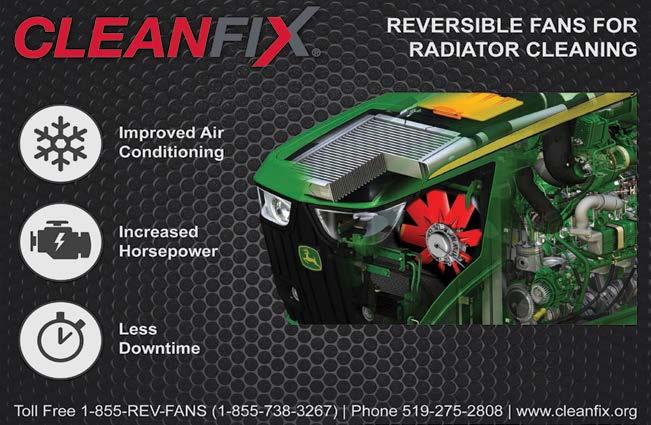



Manchester Manufacturing Company has been engineering grain harvesting in-novations since 1919. Force Feed Feeder Chains, Hillside Raddles, Plastic Inserts, and Weed Wipers are available. We can help your grain feeding prob-lem. Available for ALL combines. If your combine won’t feed at the auger, especially in short, weedy or tangled crops, it’s because it isn’t feeding at the cylinder. We solved the problem by designing a slat with a flap on it. Each slat on our Force Feed Feeder Chain works like a beater to feed material into the cylinder. Our Hillside Raddle holds grain while harvesting on a hillside. The Hillside Raddle has patented lugs attached to the steel slats. These lugs prevent grain from sliding to the downhill side
of the raddle pan before it reaches the chaffer, thus preventing overloading of the lower side of the chaffer sieve and cleaning shoe. We can replace your wooden slat raddles with steel slat raddles on all Gleaners built before 1971. The Plastic Inserts convert the Force Feed Feeder Chain to an all purpose chain to harvest all crops. They are ideal for grain stripping headers, handling only the grain and not the stalk and straw. They prevent wear on the feeder house floor, splitting, crack-ing, crushing of grain. The Manchester Weed Wiper is the perfect solution for eliminating nuisance weeds from your crops. It works excellent on rye, weeds, Johnson grass, or any growth above your crop to be harvested. Available in a front mount boom system.

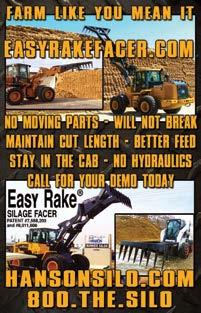
Stalk Knockers are the most user friendly and lightest weight option on the market. No need to be removed when trailering, saving valuable time. They were invented by two farmers in southwest Iowa looking for a better solution for managing stalk residue on their own farm. www.stalkknockers.com .
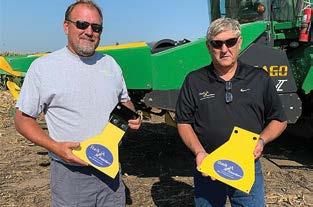


Building on the original design principles that Bale Baron owners appreciate, the new 5250 models fea-ture many impressive upgrades designed to improve productivity and serviceability while still maintaining the out-standing reliability the Bale Baron brand is all so well known for. This year Marcrest Manufacturing Inc released 2 new models; the all-new 5250 and the refined 4250. Both of these units are available in the P (pick-up) and T (trail) models. The 5250 has a hydraulic requirement of 40 gallons per minute while the 4250 requires 30 gallons per minute.
Let’s walk around the 5250 and see what fantastic upgrades have been made. At first glance you can immediately notice the wider front stance and wide flotation rear tires which keep the 5250 firmly planted. You will also see that the body work has been completely remodeled and looks fantastic! The ladder has been conveniently attached on a generous angle allowing for safer climbing to the knotter. Upon open-ing the knotter cover the relocated and re-engineered knotter miss-tie sensors cannot be missed; the new sensor location is a sure-fire way to detect actual knotter miss-ties. Another upgrade to the already extremely reliable low maintenance Rasspe knotter is the 4-lobe knotter sprocket which reduces the knotter cycle time by 25%! After the easy climb down the angled ladder you will notice the massive twine boxes, which swing out to allow full exposure to
the compression chamber and hydraulic lines for inspection and maintenance purposes. While walking around the 5250 one can easily notice that there are no grease nipples on all pivot points; this is achieved by using nitride treated pins paired with composite bush-ings. This design has been proven and adopted from the 6240 self-propelled Bale Baron. A serious feature that has not been mentioned is the ISOBUS compatible PLC. What does that mean? It means that if your tractor has ISOBUS the 5250 can be fully controlled and monitored right from the seat in your tractor! Ahh, no, my tractor doesn’t have ISOBUS?... No wor-ries, there are ISOBUS screens available from Marcrest! And for those who aren’t into the latest and greatest technology, the 5250 can easily be operated by our ever-proven standard cab control box.
Now let’s take a quick look at the 4250. It has maintained the same body work and stance as the 4240/4245. However, it shares some of the fantastic upgrades mentioned on the 5250 such as the greaseless pivot points thanks to the nitride treated pins and composite bushings. It also has the new 4 lobe knot-ter sprocket on the low maintenance Rasspe knotter for faster tie cycles. And like its big cousin the 4250 also has the new ISOBUS compatible PLC which means ISOBUS connectivity is ready and available for the 4250 when you are.
For more information please contact your nearest dealer or visit our website: www.marcrestmfg.com
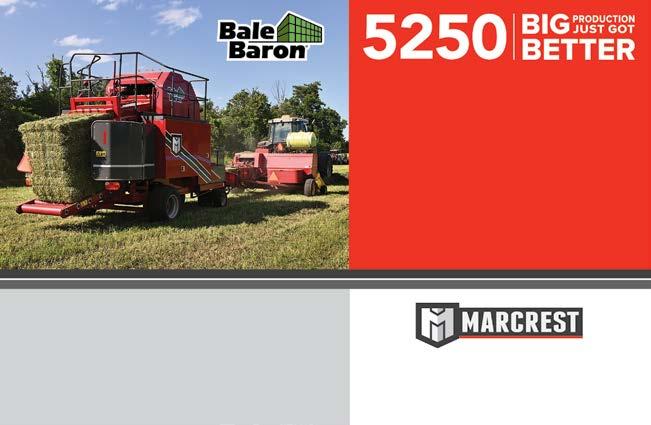
Purple Wave is an online equipment auction company that brings buyers and sellers together. Boasting of being the easiest way to buy and sell used equipment, we sell assets where they sit. We send individuals to you for picture and video capture, list your assets online, market to appropriate audience, handle title transfers, and take payments all for as little as a $100 listing fee. Our mission is Straight. Simple. Sold.
Buyers get to shop with confidence as seller contact information is listed for complete transparency. Purple Wave is a no reserve auction marketplace so the asset will sell to the highest bidder regardless of price.
Bi-weekly agriculture, construction and fleet industry auctions provide ample opportunities to find equipment you have been searching for. Purple Wave has never lost the traditional auction feel. Visit purplewave.com and experience for yourself.


e Bid anytime, anywhere - 24/7
e Add items to your watchlist
e Set it and forget it with MAX bid
e All items sell no reserve!
e Multiple auctions held every week
e No transportation or preparation cost
e We handle post auction payment/titles
e All equipment is sold “AS IS, WHERE IS”
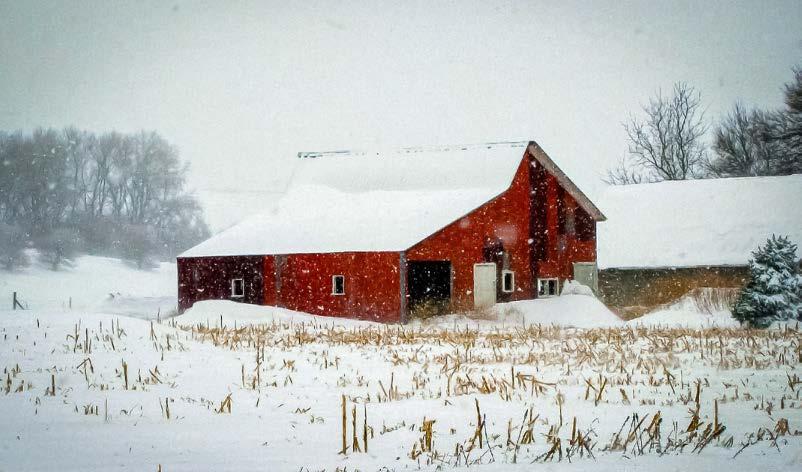
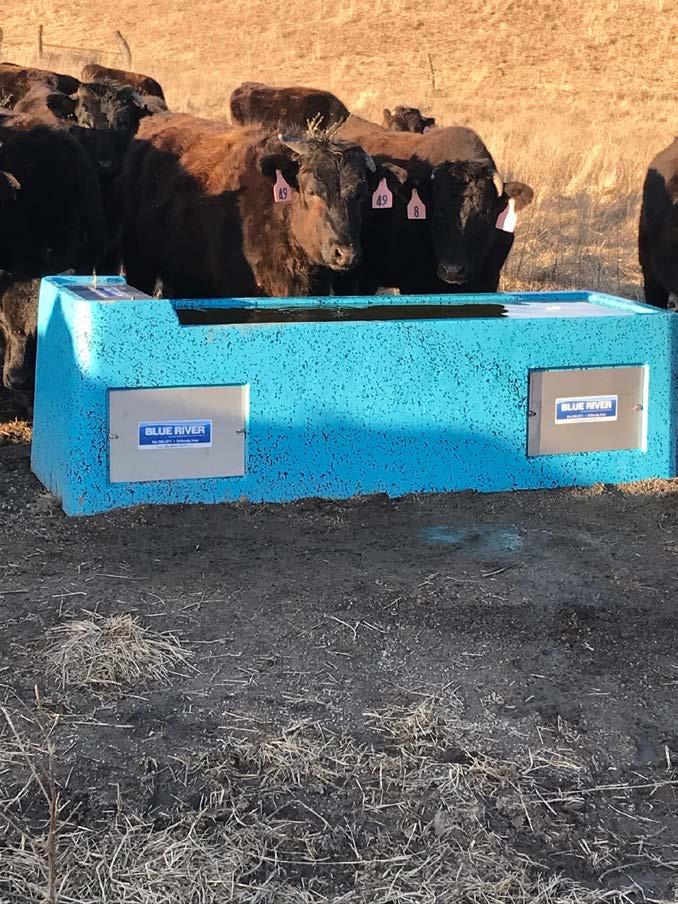
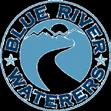
Uncontrolled pocket gopher infestations in hay and pasture fields cause significant financial expense. Damaged and worn equipment, dirt in the harvested crop, and premature plowing of the field are major losses. The main means of control have been trapping, baiting and fumigation. The reality of today’s labor situation means the “hands and knees” methods are both too costly and too labor intensive for most operations. That eliminates trapping, hand placed bait or hand probing to fumigant as viable control options. Fumigation with aluminum phosphide was the gold standard in many government tests, but it meant hand probing for tunnels, and repeated worker exposure to phosphine gas.
a solution that effectively controls pocket gophers, at reasonable per acre cost, while staying in the tractor cab.
The Gopher General machine meets those objectives, AND provides exceptional gopher control from phosphine fumigation. The machine meters aluminum phosphide tablets into a deep, well sealed tunnel. Phosphine gas is released underground over a few days, fills the deeper tunnel and moves through the soil adjacent to the tunnel. A bit of moisture and warm soil do the rest. The gophers expire quickly underground, before they can get any fresh air.
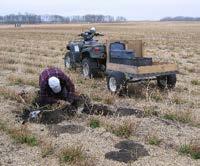
The only solution that kept you off your hands and knees was the mechanical baiter machine. These machines were widely manufactured and used, but gopher control has been disappointing for many of us in recent years. The general feeling has been that the baits aren’t working any more. Farmer and ranchers needed
There are over 100 Gopher General machines in operation over the Midwest and western USA. They work in hard or sandy soils, without plugging or replacing shear pins. This machine is capable of treating big acres quickly with excellent gopher control. Check out www.GopherGeneral.com for more information on the machines and the farmers who own them. After all, the best people to talk with, are the ones who currently run these machines.
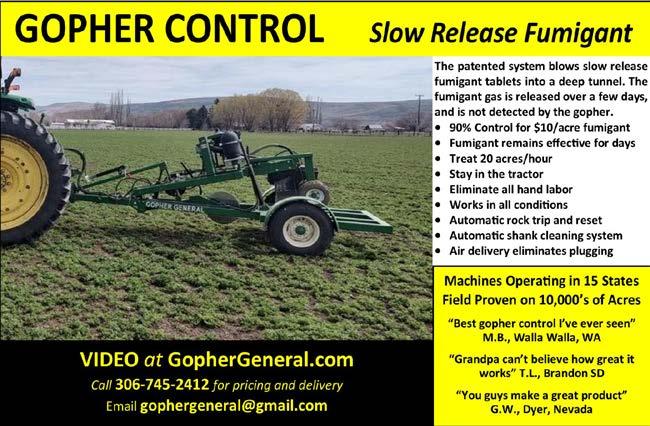
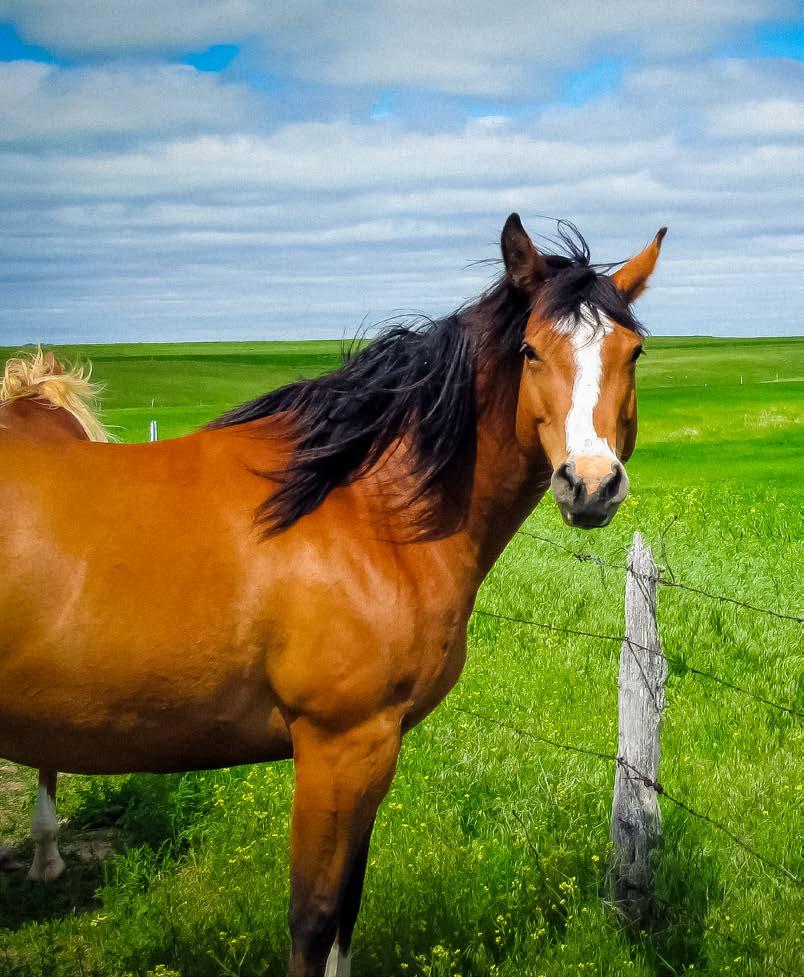
Each new season brings new challenges, including dealing with scours of all kinds. In the US each year too many calves are lost due to preventable illness and death from scours. The impact this has on small and large operations is priceless when time and energy are also factored into the financial loss. Imogene Ingredients and our product, Farmatan, can help prevent scours in all livestock at a measurable rate.
A 1,760 head Cow/Calf operation in South Dakota lost 174 calves to scours in 2019. They added Farmatan to their cow’s mineral program and lost 2 calves in 2020. They had similar scours in 2021.
In a 225 head Angus herd in South Dakota they have been using Farmatan in their mineral for 4 years consistently. In 2017 they treated 110 calves for Cryptosporidium scours with 25 lost; 2018 treated 6 with none lost; 2019 treated 6 with none lost; 2020 and 2021 also brought no loss to scours. Farmatan is comprised of a complex group of natural
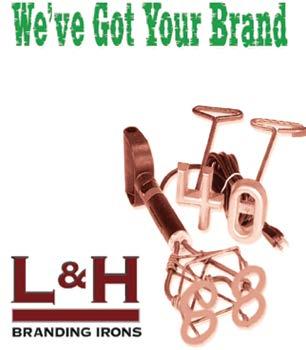
compounds with antioxidant and antimicrobial properties. Farmatan works to develop lower gut wall integrity by improving tight junctions between cell walls. Farmatan contains naturally occurring organic acids that help to support immune function in the GI tract; preventing leaky gut and providing immune support to help prevent and reduce the severity of calf scours.
Farmatan works for various target species: cow/calf, dairy, poultry, swine, and goats.
There are many options for prevention using Farmatan products – young animal paste, mineral, calf creep, milk replacer, lick tubs, and products formulated for poultry feed.
Are you asking yourself why you haven’t started incorporating Farmatan? We don’t know why either. Reach out, let’s talk about what we can do to help eliminate scours for your operation. We can be reached at www.farmatanusa.com.

BBeefmaster is a beef breed developed in America that improves beef quality and production efficiency when crossed with any other cattle breed for commercial beef production. The breed originated in Southern Texas in the late 1800’s into the early 1900’s. The Lasater family originally developed a large herd of Hereford cattle carefully selected to withstand the heat and insects of the Texas Gulf Coast region, but they were still not perfectly suited to that difficult environment. So Lasater began to experiment with incorporating Bos indicus or Zebu genetics, in the form of Gyr and Guzerat bulls from India and Nelore from Brazil. While the practice of crossbreeding was virtually unheard of at the time, they immediately saw a tremendous jump in productive traits, such as weight gain and reproductive rates. This is genetic advantage known as heterosis or hybrid vigor.
losophy known today as The Lasater Philosophy. The concept is to only select cattle for economically relevant traits, which he distilled to these Six Essential traits. It is the only breed in history to be selected only using pressure for productive traits, as opposed to aesthetics.
In 1937, the herd was closed to outside genetics with continued internal development to cull low-performers and upgrade all traits together equally. By 1954 the foundation herd was recognized by USDA under the name of Beefmaster.
By the early 1930’s, the ranch also incorporated Milking Shorthorn genetics, to augment milk production and carcass quality. They could immediately see that the three-way hybrid was far superior to the two-way crosses. The final composite ended up at roughly 50% Bos indicus and 50% Bos taurus (25% Hereford and 25% Shorthorn).
eefmaster is a beef breed developed in America that improves beef quality and production efficiency when crossed with any other cattle breed for commercial beef production. The breed originated in Southern Texas in the late 1800’s into the early 1900’s. The Lasater family originally developed a large herd of Hereford cattle carefully selected to withstand the heat and insects of the Texas Gulf Coast region, but they were still not perfectly suited to that difficult environment. So Lasater began to experiment with incorporating Bos indicus or Zebu genetics, in the form of Gyr and Guzerat bulls from India and Nelore from Brazil. While the practice of crossbreeding was virtually unheard of at the time, they immediately saw a tremendous jump in productive traits, such as weight gain and reproductive rates. This is genetic advantage known as heterosis or hybrid vigor.
As Lasater developed the breed, he also formed a unique selection philosophy known today as The Lasater Philosophy. The concept is to only select cattle for economically relevant traits, which he distilled to these Six Essential traits. It is the only breed in history to be selected only using pressure for productive traits, as opposed to aesthetics.
substantial economic gains from using Beefmasters to provide an average increase of 60 lbs., or more at weaning when compared with other breeds. They excel post-weaning as well, with faster weight gains, excellent feed conversion and carcass yields around 64%
excellence, particularly in harsh desert or tropical environments. The breed has excelled across most regions of the United States and is the leading breed of choice for commercial cattlemen in Mexico, South Africa, Thailand, Panama, Columbia and several other Latin American regions. With global demand for higher-quality beef growing geometrically, Beefmasters provide the perfect breed to cross on commercial cattle to improve production efficiency and carcass quality, while not sacrificing adaptability.
Commercial cattlemen have noted substantial economic gains from using Beefmasters to provide an average increase of 60 lbs., or more at weaning when compared with other breeds. They excel post-weaning as well, with faster weight gains, excellent feed conversion and carcass yields around 64%.
In a time when sustainability is becoming increasingly critical, Beefmasters have repeatedly demonstrated that they are highly efficient converters of both forage and feeds into lean, tender, high-quality beef. A recent study at the U.S. Department of Agriculture Meat Animal Research Center (MARC) demonstrated Beefmasters dominance when compared to 18 of the most widely used beef breeds in the United States.
By the early 1930’s, the ranch also incorporated Milking Shorthorn genetics, to augment milk production and carcass quality. They could immediately see that the three-way hybrid was far superior to the two-way crosses. The final composite ended up at roughly 50% Bos indicus and 50% Bos taurus (25% Hereford and 25% Shorthorn).
In 1937, the herd was closed to outside genetics with continued internal development to cull low-performers and upgrade all traits together equally. By 1954 the foundation herd was recognized by USDA under the name of Beefmaster.
As Lasater developed the breed, he also formed a unique selection phi-
The breed has rapidly grown around the world and has become known as the prime maternal cow for serious commercial cattlemen that appreciate their production excellence, particularly in harsh desert or tropical environments. The breed has excelled across most regions of the United States and is the leading breed of choice for commercial cattlemen in Mexico, South Africa, Thailand, Panama, Columbia and several other Latin American regions. With global demand for higher-quality beef growing geometrically, Beefmasters provide the perfect breed to cross on commercial cattle to improve production efficiency and carcass quality, while not sacrificing adaptability.
The breed has rapidly grown around the world and has become known as the prime maternal cow for serious commercial cattlemen that appreciate their production


In a time when sustainability is becoming increasingly critical, Beefmasters have repeatedly demonstrated that they are highly efficient converters of both forage and feeds into lean, tender, high-quality beef. A recent study at the U.S. Depa rtment of Agriculture Meat Animal Research Center (MARC) demonstrated Beefmasters dominance when compared to 18 of the most widely used beef breeds in the United States.
Beefmaster Breeders United (BBU) is headquartered in Bryan, Texas. Beefmaster ranks fifth in the U.S. in terms of membership and is the largest of the American breeds. The association has over 3,000 members registering around 19,000 calves annually.
Beefmaster Breeders United (BBU) is headquartered in Bryan, Tx. Beefmaster ranks fifth in the U.S. in terms of membership and is the largest of the American breeds. The association has over 3,000 members registering around 19,000 calves annually.
Commercial cattlemen have noted
Beefmasters also enjoy a rapidly growing international footprint, with established associations in eight countries worldwide. These innovative cattlemen have seen the tremendous strengths Beefmasters bring to their own genetic improvement programs. For more information about what Beefmasters can do for your operation, please visit us www.beefmasters.org

Beefmasters also enjoy a rapidly growing international footprint, with established associations in eight countries worldwide. T hese i nnovative cat tlemen have seen the tremendous strengths Beefmasters bring to their own genetic improvement programs. For more information about what Beefmasters can do for your operation, please visit us w ww.beefmasters.org. e
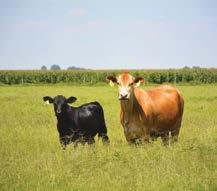

Let us sell your surplus farm, ranch, construction and vehicles anywhere in the USA at our online Auction! APPRAISALS, LIQUIDATIONS, HAULING, NEW & USED PARTS, TIRES, RIMS & MORE! Kaddatz Auctioneering #TXS 6676 254-582-3000 • farmstore.online

Simm & Sim-Angus Bulls Bred for growth and longevity. Delivery available. Contact Alan at: 503-931-6815 3hsimmental@gmail.com Plains, MT
N5, N7, L, L2, R50. 9600, 9510, 9500, 8820, 7700, 7720, 6600, 6200, 4400, 3300, 105, JD. 2188, 1680, 1480, 1460, 1420, 915, 815 IHC. 860, 760, 750, 510, 410, 300 Massey, 643 JD Cornhead parts. 653A JD row crop heads parts. We buy salvage combines. Jack Boyle Vermillion, KS 785-564-0511 • 785-294-2236

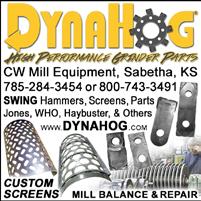
404T & 466T John Deere Engines 433 & 466 International Engines Jack Boyle Combine Salvage Vermillion, KS 785-564-0511 • 785-294-2236





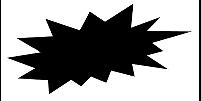

Available for METAL, composition shingles or tar roofs. Long lasting and easy to apply. We also manufacture tank coatings for concrete, rock, steel, galvanized or mobile tanks. Call for our free catalog:




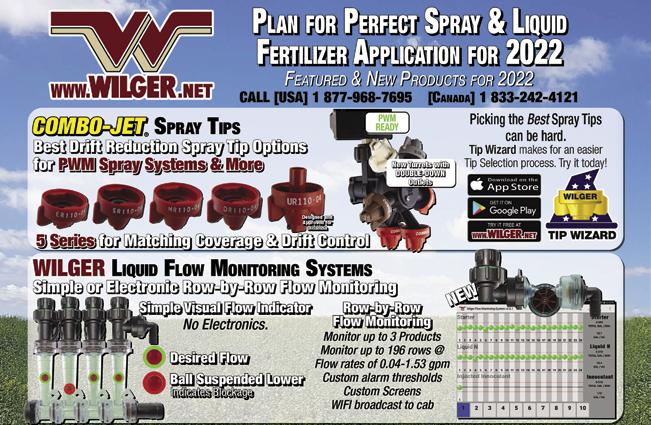

3 – 4 – 3
41% L-Amino Acids +Chitosan For Maximum Stress Immunity.

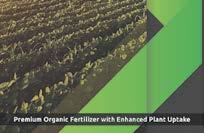
4 – 2 – 3
38% L-Amino Acids Give Crops Extra Energy.
● Plant-Derived for Super-Efficient Plant Availability means much less is needed than other fertilizers because much higher percentages of nutrients get into plants with faster uptake.
● Plant Safe. Will not burn plants, even if used undiluted.
● Highest Percentages of L-Amino Acids for stress relief and disease prevention. - Compare with other brands -
● 100% Water Soluble. Will not clog drip emitters or precipitate in lines.
9 – 0 – 0
35% L-Amino Acids Safe for foliar application.
● Boosts Microbial Biomass and Soil Nutrients Availability. Foliar Spray To Complex Minerals, Nutrients and Hormones.
